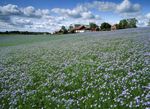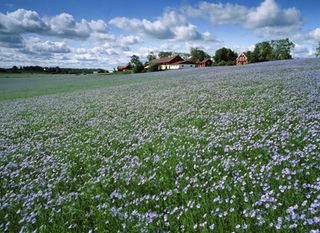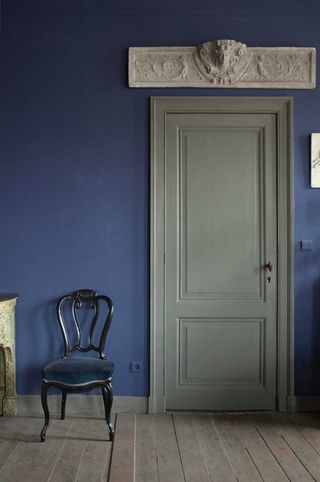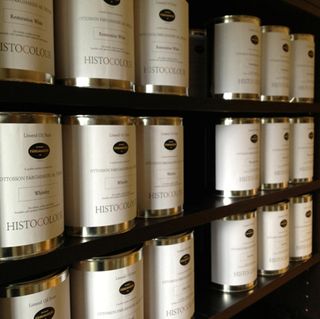Linseed Oil Paint: The future of paint
Linseed oil paints last longer, are sustainable, non-toxic and are fantastic at preserving new and old woodwork


Linseed oil has been a core component in the making of paint for centuries. In times past, linseed oil was used as a carrier in what we know as ‘oil paints' along with quantities of natural pigment, white lead and turpentine. These paints were excellent for protecting timber from the elements and lasted for decades. These traditional paints have long since died out due primarily to the significant health risks associated with using lead in paint, as well as the explosive growth of the petrochemical industry in the second half of the 20th century.
Today the market is packed with petrochemical (or solvent-based) paint as well as the increasingly popular acrylic (water-based) paints which have the advantage of lower VOC's (Volatile Organic Compounds) widely known to contribute to air pollution and health problems.
However, for all the advances in paint technology in recent times, durability is still a major issue; the guidance from most manufacturers is to repaint every 3 - 5 years. So, is it possible to have a paint that is 100% environmentally friendly, has no health risks and still lasts decades? Yes, Linseed oil paints.
With the ‘green' movement successfully convincing us that cheap is not always best and making us aware of the hidden costs, both personally and to the environment and with the technological advances made in the production of linseed oil - it is becoming popular again.
The flax pressing industry vanished back in the early sixties; fortunately in recent years we have seen a resurgence coming from the heartland of linseed paint, southern Sweden. Since the 1980's, the Swedish open-air museum Kulturen (www.kulturen.com) in Skåne, opened in 1892) together with Ottosson Färg has done extensive research into the use of linseed paint on century-old buildings and how best to preserve the beautiful old structures for future generations.

Derived from the cultivated flax plant [linum usitatissimum, pictured] oil is extracted from the plants seeds using a method called cold pressing. The newly pressed oil is called ‘cold-pressed raw linseed oil' and is stored for about six months during which time any impurities separate and the clear pure oil can be drawn off. As its surface tension is lower than water, the oil has an unequalled ability to penetrate deep into the substrate.
Because raw linseed oil penetrates the surface far better than any synthetic paint (which forms a film on the surface) it therefore has a much longer life span. It forms a bond with the timber and does not flake or peel. Linseed paint preserves the wood very well.
Sign up for the Country Life Newsletter
Exquisite houses, the beauty of Nature, and how to get the most from your life, straight to your inbox.
Added to the raw linseed oil are naturally occurring ‘inorganic' pigments to create colour. Inorganic pigments include all earth pigments, iron oxide pigments, zinc oxide, titanium oxide and cobalt and are generally stable to air and light and function best with linseed oil.
Drying time is about the same for linseed oil paint as solvent-based based oil paint; however, as linseed oil dries by exposure to oxygen and UV-light, different weather conditions can change the drying times slightly. On average, though, 1 coat is dust-dry after 12-24 hours and a new coat can be applied after 36 hours. Setting this off against an almost infinite life-span, does not seem to make this very long.
Over time, linseed paint can fade (due to the decomposition of the linseed oil in the paint). This is only superficial and maintenance is a simple wipe of the painted surface with a thin coat of linseed oil. Because of its natural ingredients it decomposes naturally, leaving no harmful waste residue.

Linseed oil paint benefits:
* Lasts up to three times longer than most modern paints * Ingredients from sustainable resources and free from harmful additives and solvents * Non toxic - safe for use around animals and children * Minimal VOC's (Volatile Organic Compounds) great for the planet * To maintain finish, simply recoat with a single application of oil * Use both outdoors and indoors on timbers and metal * Can be stored for several years
Through the rediscovery of ancient wisdom, there is an alternative to modern paint products, which has been proven to be cost effective, good for the environment and able to preserve new and period woodwork features for decades to come.

This article was written by Histocolour who supply high quality linseed oil paints for both interior and exterior applications available through their online store. As well as supplying paints and accessories under their own brand name, they also supply the Ottosson range of linseed oil paints which uniquely can be supplied colour matched to any existing colour.
* Subscribe to Country Life and save; Subscribe on Ipad

This is an article from ProjectBook which provides a wide range of information for the conservation, restoration, care and repair of period and listed buildings.
Established in 2008, Projectbook provides recognition and support for the Uk's leading conservation and heritage professionals as well as putting property owners in touch with the right people and information.
Histocolour are members of the Heritage Register which contains over 500 conservation approved craftsmen, contractors and consultants from all over the UK. Updated daily with new content, the website features the Heritage Register, a products directory, informative articles, current news, events around the UK and more. For more information, visit www.projectbook.co.uk
Country Life is unlike any other magazine: the only glossy weekly on the newsstand and the only magazine that has been guest-edited by HRH The King not once, but twice. It is a celebration of modern rural life and all its diverse joys and pleasures — that was first published in Queen Victoria's Diamond Jubilee year. Our eclectic mixture of witty and informative content — from the most up-to-date property news and commentary and a coveted glimpse inside some of the UK's best houses and gardens, to gardening, the arts and interior design, written by experts in their field — still cannot be found in print or online, anywhere else.
-
 From California to Cornwall: How surfing became a cornerstone of Cornish culture
From California to Cornwall: How surfing became a cornerstone of Cornish cultureA new exhibition at Cornwall's National Maritime Museum celebrates a century of surf culture and reveals how the country became a global leader in surf innovation and conservation.
By Emma Lavelle Published
-
 18 magnificent homes for sale from £550k to £20 million, as seen in Country Life
18 magnificent homes for sale from £550k to £20 million, as seen in Country LifeFrom a charming thatched cottage to a 300-acre estate with its own vineyard, here's our pick of places to come to the market via Country Life of late.
By Toby Keel Published

